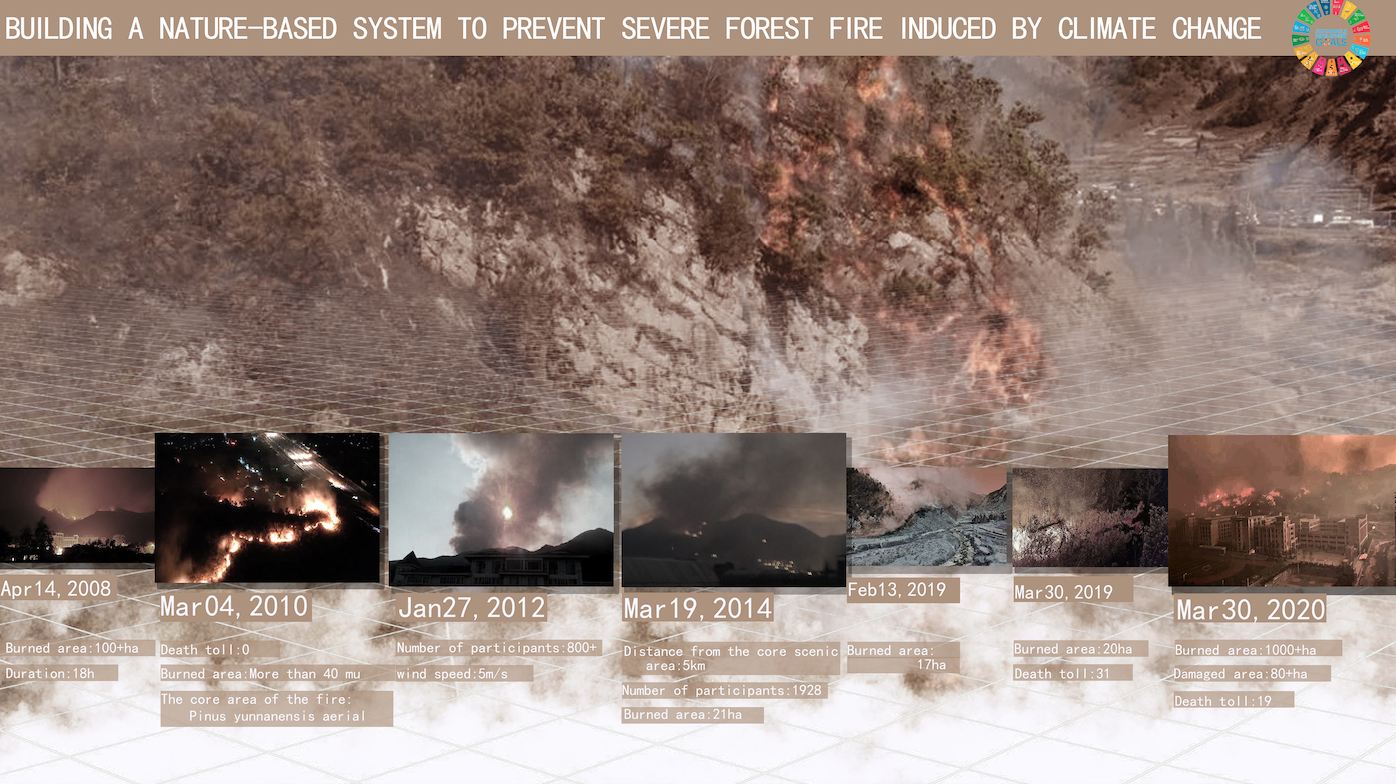
Building a Nature-based System to Prevent Severe Forest Fire Induced by Climate Change
Landscape Architecture Planning Studio
School of Architecture and Urban Planning, Department of Landscape Architecture
Teaching staff.
Supervisor: Han Yuwen, Li Lingjie, Wan Min
Co-supervisor:
Students.
Authors: Pan Yingi, Li Lingjie, Lu Meng
Due to climate change, forest fires occur more and more frequently all over the world, which lead to more carbon
emission so that exacerbate the climate problem. Xichang, a southwest city in China, is one of the victims of this
vicious circle. There were 6 large-area forest fire in Xichang in the past 10 years, among which the worst case
caused more than 1000ha area burnt. It is believed that these wildfires are closely related to the climate change of
Xichang in the past 30 years, including rising temperature and reduced humidity. What’s worse, the hot-dry wind
brought by valley effect makes the fire more intense and frequent. Therefore, here we take Xichang as an example
to show how to alleviate the fire problem by building a nature-based system.
We will use the following strategies to prevent and mitigate climate-induced forest fire. The existing hot foehn
wind and air condition can be converted to the usable energy for the rainwater collection systems, sprayers and
monitor at fire-prone sites. In high fire season, the monitoring system will play an important role. Besides, herbs
are planted under the original monocultural tree plantation, so as to increase the air humidity and then reduce the risk of fire. This project can serve as a model to deal with wildfires for cities located in hot and dry valley.
